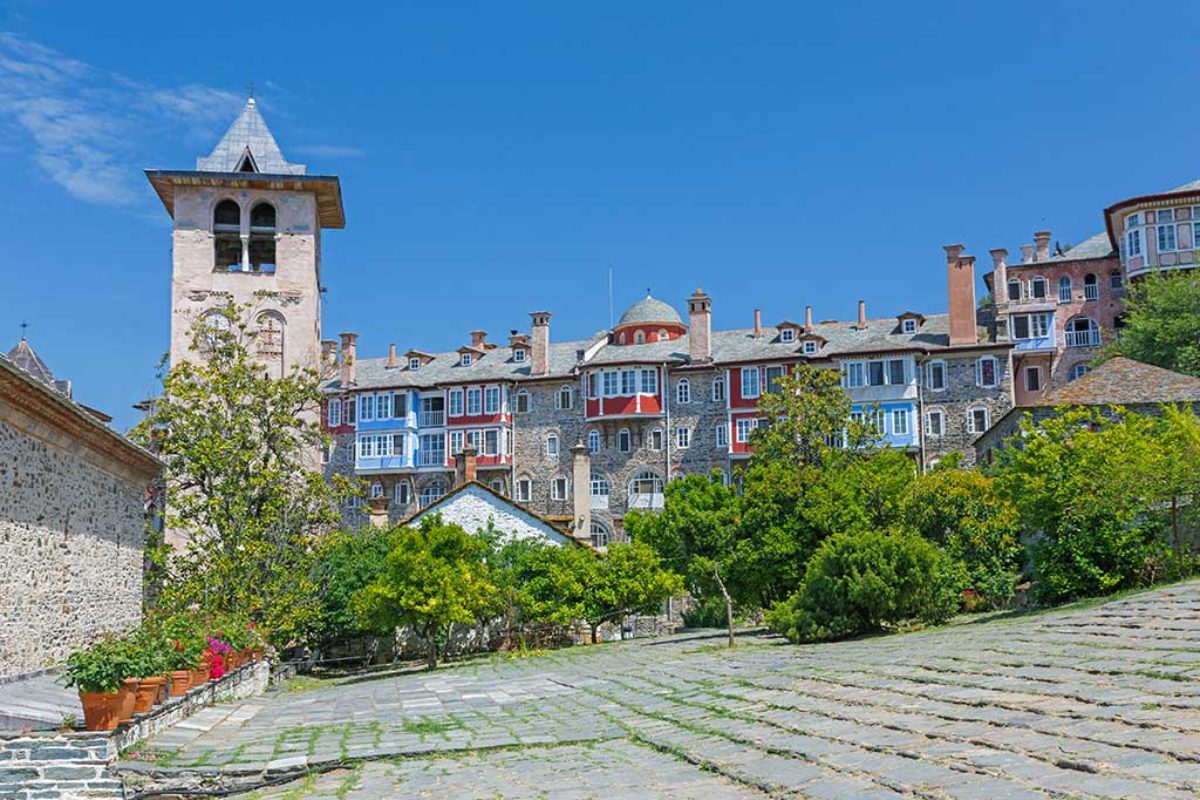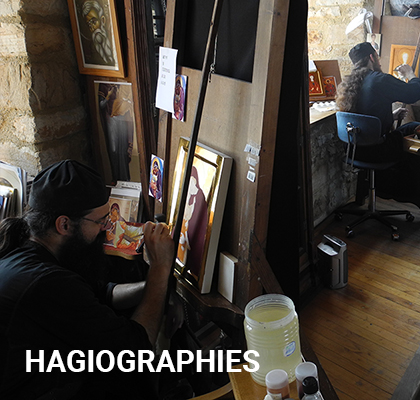Our Day Pilgrimage begins in the 4 th century city of Ouranopolis(City of Heaven) where we will acquire our entry passes to Athos. We will then depart via speedboat to the coastal port of Daphne from where we will proceed by private car to the Athos capital of Karyes. Karyes is a central geographic point on Mount Athos from where most monasteries can be reached efficiently.
ITINERARY
9:00 Meet at the Pilgrim’s Office in Ouranopolis for entry pass
9:30 Depart Ouranopolis by speedboat(1-8 passengers) to Daphne
10:00 Arrive in Daphne
10:00 – 17:00 Tour Monasteries
12:00 – 13:00 Lunch Optional
16:00 Return to Ouranoupolis via boat
*If customers would like to follow afternoon holy vespers from 17:30 to 18:30, must leave than for Ouranoupolis in a private speed boat with an additional price of 250€ from 1 to 7 persons
The excursion includes
Visit 5-6 of the most famous monasteries,such as,XENOFONTOS-RUSIAN-BATOPEDI-KARYES-KOUTLOUMOUS-ST ANDREA-SIMONOS PETRA,AND IBHRON if time permits us
and having a morning typikal Athonite meal with the monks,if available.
Monasteries are:
The Holy and Great Monastery of Vatopedi is an Eastern Orthodox monastery in the monastic state of Mount Athos in northern Greece. was built during the second half of the 10th century. The Monastery of Vatopedi holds the Cincture of the Theotokos which she wore on earth and gave to Thomas the Apostle after her death and during her transition to heaven. St. John Chrysostom is kept in the Monastery and is credited by Eastern Orthodox Christians with miraculous healings. The monastery also contains the Iaspis, a chalice fashioned of a single piece of the precious stone jasper, and numerous icons. The library holds 2,000 manuscripts and 35,000 printed books. Among manuscripts from Vatopedi are Uncial 063, Uncial 0102, and the Vatopedi Psalter in the British Library and the early-14th century Codex Vatopedinus 655 divided between the British Library and the French Bibliothèque Nationale, which includes numerous peripluses, extracts from Strabo and Ptolemy’s geographical works, and early maps.
The Holy Monastery of Iviron is an Eastern Orthodox monastery in the monastic state of Mount Athos in northern Greece. The monastery was built under the supervision of two Georgian monks, John the Iberian and Tornike Eristavi between 980-983 and housed Georgian clergy and priests.[1] Iveron literally means “of the Iberians” in Greek. The name Iviron originated from the ancient Georgian Kingdom of Iberia (Iveria) where the master architect of the monastery Ioannes was from. The monastery ranks third in the hierarchy of the Athonite monasteries. The monastery library contains 2,000 manuscripts, 15 liturgical scrolls, and 20,000 books in Georgian, Greek, Hebrew, and Latin.
The monastery has the relics of more canonized saints than any other on Mount Athos. The Panagia Portaitissa, a famous 9th century icon, is also located at Iviron. The monastery has about 30 working monks and novices, none of whom are Georgian. However, there are forty or so Georgian hermits living in hermitages near the monastery.
The Holy Monastery of Xenofontos
It is built by the sea, between the monasteries of Docheiariou and St Panteleimonos, and is dedicated to St George. The Katholicon is built in the early 18th c. and has no frescoes. In the old Katholicon, there are remarkable frescoes of the Cretan painter Antonius (1544) as well as the wooden-curved templum of the 17th c. The monastery possesses 14 chapels, 8 of which are inside the monastery. Xenophontos Monastery has two Catholics honored in St. George. The monastery is mentioned for the first time in the last quarter of the 11th c. Its period of prosperity is interrupted by the fall of Constantinople. Afterwards, the monastery is alternatively destroyed and rebuilt with the financial aid from the rulers of eastern Europe. Among the heirlooms of the monastery, the most prized are the two mosaic icons with the Transfiguration of Christ, ecclesiastical vessels and others. In the library there are 300 manuscripts, various documents and over 4,000 books. The monastery is inhabited by a brotherhood of 35 monks.
The Holy Monastery of Simonos Petra is an Eastern Orthodox monastery in the monastic state of Mount Athos in Greece. The monastery is located in the southern coast of the Athos peninsula, between the Athonite port of Dafni and Osiou Grigoriou monastery. While the southern coast of Athos is quite rugged in general, the particular site upon which the monastery is built is exceptionally harsh. It is built on top of a single huge rock, practically hanging from a cliff 330 metres over the sea. The monastery was founded during the 13th century by Simon the Athonite The monastery consists of several multi-storeyed buildings, the main being in the place of the original structure, built by Simon. The main building has been described as the “most bold construction of the peninsula”.[3]The monks of Simonopetra traditionally count the floors from top to bottom, thus the top floor is the first floor and the bottom floor the last. The monastery is built on top of the underlying massive rock, and the rock runs through the lower floors. The original monastery was called by Simon “New Bethlehem and is to this day dedicated to the nativity of Jesus. The choir of Simonopetra has grown in reputation among Byzantine music specialists and enthusiasts.
Karyes, Mount Athos
Karyes. is a settlement in Mount Athos It is the seat of the clerical and secular administration of the Athonite monastic state. The 2011 Greek census reported a population of 163 inhabitants. It is the largest settlement in Mount Athos. The major church at Karyes is the Protaton, which is the church of the Protos or president of the monastic community.Axion estin, or It is Truly Meet, is a megalinarion and a theotokion, of and a Hymn to Mary which is chanted in the Divine Services
Koutloumousiou Monastery.









